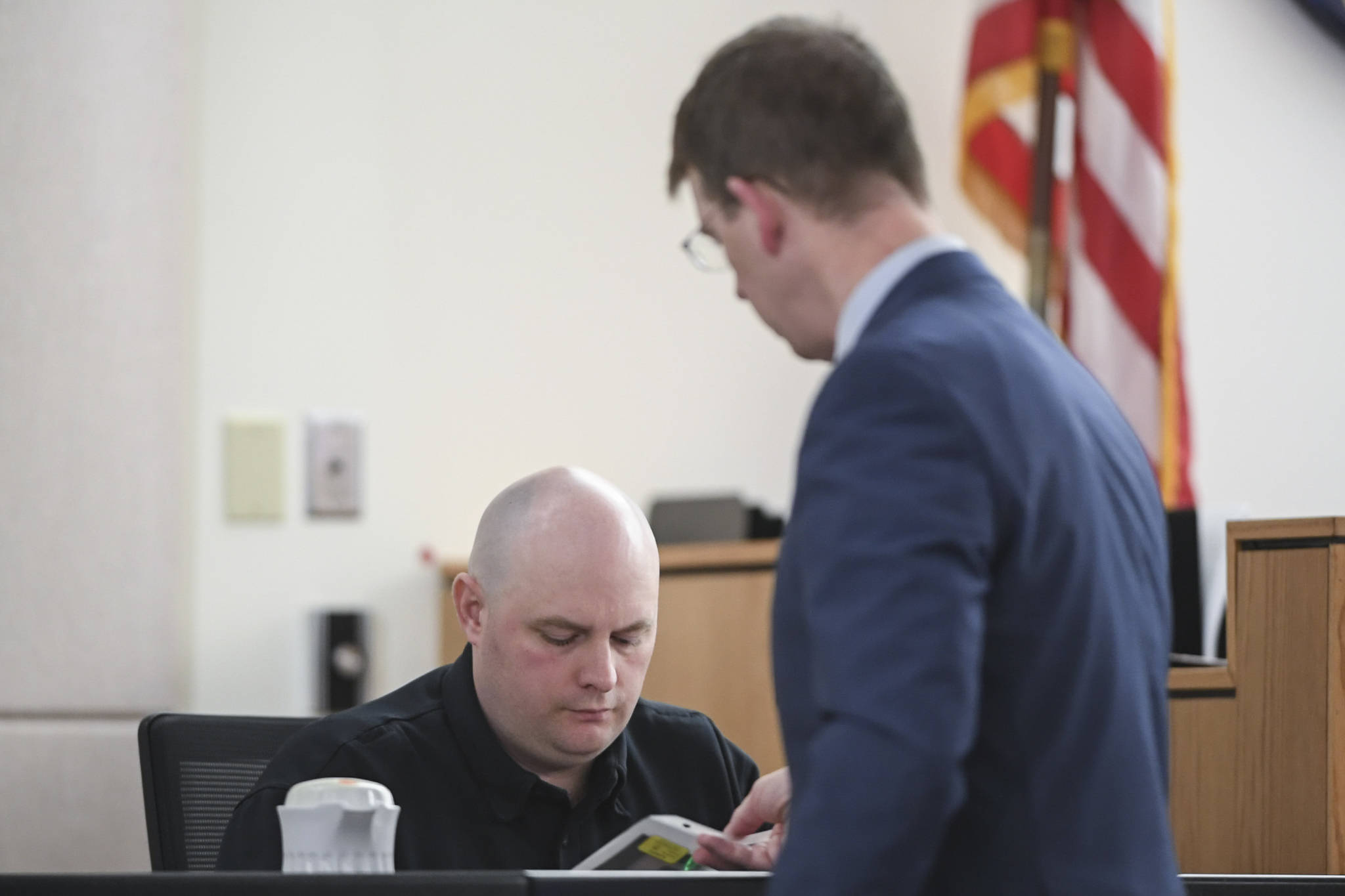A trial for a 2015 double murder was marred Monday as a witness’ attorney claimed that making him testify would violate his Fifth Amendment rights.
Thomas Jack Jr., serving a sentence of 40 years for sexual assault of a minor, was excused from testifying after his attorney filed a motion on the grounds that his testimony would violate his right not to incriminate himself.
In 2016, Jack was incarcerated in Lemon Creek Correctional Center and shared a cell with his nephew, James LeBlanc-Tweedy. LeBlanc-Tweedy exchanged notes with the defendant in Monday’s double murder trial, Laron Carlton Graham, 42. Graham allegedly passed a note to LeBlanc-Tweedy claiming he killed Elizabeth Tonsmeire, 34, and Robby Meireis, 36. LeBlanc-Tweedy testified earlier in the trial that he talked with Jack for advice before consulting with his attorney as he tried to get word of the confession to the police.
Sgt. Matthew DuBois also testified on his findings as a police detective at the time of the 2015 murder. DuBois was the on duty detective on Nov. 15, 2015, when the police were called by John “Kelly” Tonsmeire, Elizabeth Tonsmeire’s father, who had discovered the murder scene.
“I got a call from Sgt. Dallas requesting the criminal investigation unit’s assistance at a crime scene,” DuBois said during direct examination. “I realized that I wasn’t going to be able to do it by myself, and I made calls to other detectives in the unit.”
DuBois was responsible for photographing the scene as they found it, so that events could be reconstructed in the future. DuBois testified during direct examination that the apartment was small and cluttered, and there was presence of drug paraphernalia.
“There were marijuana pipes, methamphetamine pipes, syringes, pills, dime baggies,” DuBois said during direct examination.
The pills were likely ibuprofen or aspirin, DuBois said. The dime bags contained methamphetamine, verified by field testing.
[Fingerprint expert, former corrections officer testify in double murder trial]
On the victims, DuBois testified that apart from a single gunshot wound to the head each, there was no other signs of trauma. DuBois said that he found the round that killed Tonsmeire tangled in her hair near the exit wound in the back of her neck. The gunshot, at such close range, had caused what’s called “stippling” from unburnt gunpowder being driven into skin hard enough to tattoo it in, DuBois said. He had seen this before, both with his training as a police officer and as a soldier in Baghdad, DuBois testified during direct examination.
The round that ended Meireis’ life proved more difficult to locate.
“Mr. Meireis was covered in a lot of blood. It was very thick in some areas. It was very difficult to locate the exit wound without washing his body,” Dubois said during direct examination. “I realized that the bullet had exited Mr. Meireis’ body and it was reasonable to believe that it was still in the vicinity.”
The bullet was located two days after the beginning of the investigation in the arm of a sofa behind Meireis, DuBois said.
Once they had the physical evidence in hand, DuBois said, they began investigating people who had been at Tonsmeire’s apartment on Friday, Nov. 13. Brandon Stephens gave the police names of other individuals who had been there, including Bill Reyes, and a large African-American man known as “G”.
After a little bit, police were able to narrow down the identity of “G” as Laron Graham, running down his aliases and phone number.
“There was a lot of pieces that fell into place to identify “G”,” Dubois said during direct examination. “Myself along with other members of the police department started looking into that name.”
The trial will continue Tuesday morning.
• Contact reporter Michael S. Lockett at 523-2271 or mlockett@juneauempire.com.

